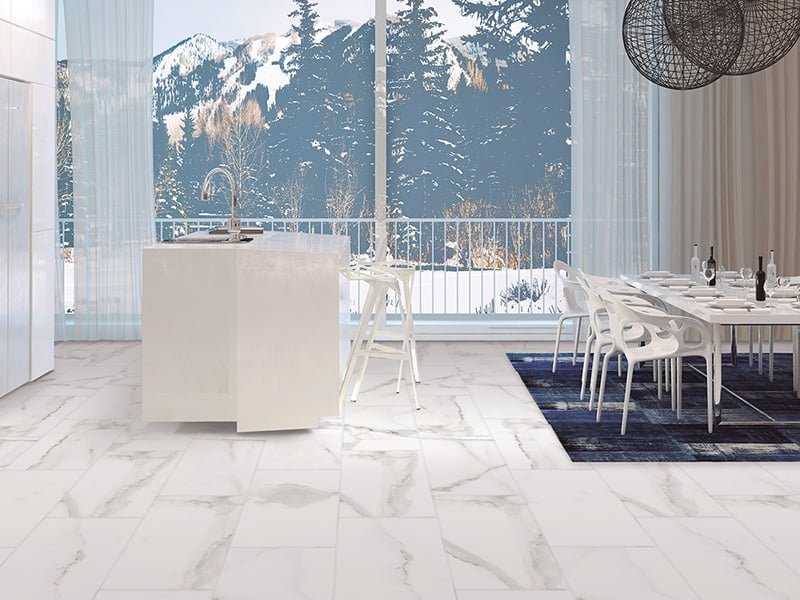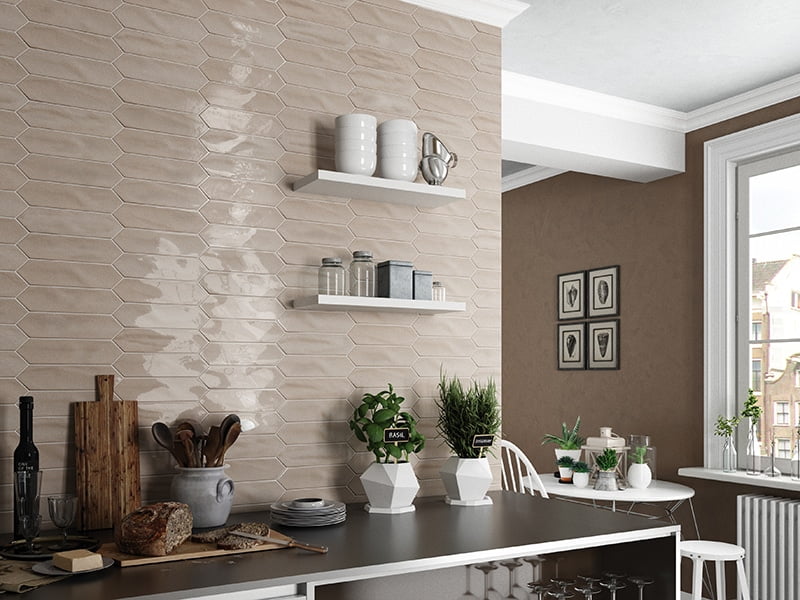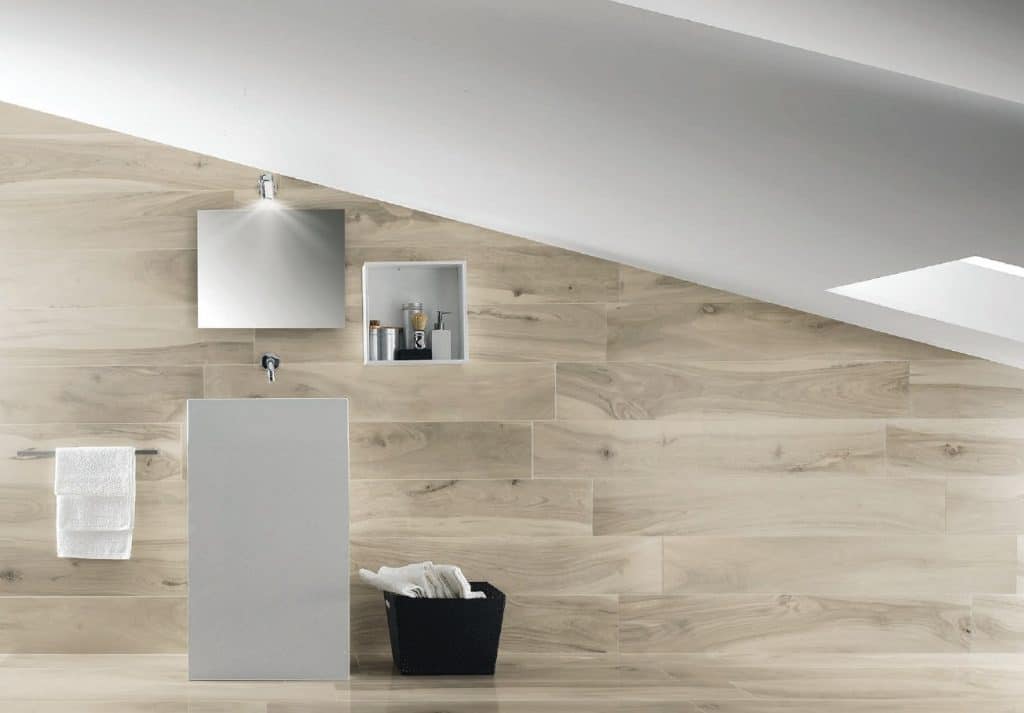In our everyday life, we often hear the words “porcelain” and “ceramic” used as synonyms. There is some truth in this. In reality, they all belong to the Ceramic category but then get divided into two subcategories: non-porcelain tiles (commonly called Ceramic tiles) and porcelain tiles.
Let’s explore what the difference between them is.

Difference between porcelain and ceramic
Almost every detail about tiles has to do with their resistance to the elements, therefore more or less suitable for specific applications.
Ceramic and porcelain tiles are made of about the same recipe, mostly clay mixed with other inorganic ingredients.
Once combined all the powdery items together with water, the slurry is molded and pressed under substantial weights, then baked at very high temperatures.
The finer the powders, the thicker the slurry, and the higher the temperature, the result will be a stronger and more resistant porcelain tile.
Otherwise, with a coarser grain and lower temperature, the result will provide a softer and more brittle ceramic tile.
Ceramic Tiles

Ceramic tiles are glazed with a protecting coating on the surface, sealing the pores of the underside of the tile. Underneath the glaze, the bisque is generally of a red/tan color or completely white.
Generally speaking, due to their delicateness, ceramic tiles are suitable for wall application only. In fact, even if they can be exposed to elements like water, they would eventually break under the weight of a person walking.
Ceramic tiles have a lower water absorption resistance, which means that they can retain water and produce mold. When choosing ceramic tiles for a project where water is involved, it is crucial to check with the manufacturer that those tiles can be used in wet areas. Sometimes applying a protective sealer is also recommended.
If used otherwise, ceramic tiles may present water discoloration stains and mold on the surface.
Porcelain Tiles

Porcelain tiles may be glazed, but the higher quality porcelain tiles are made of a consistent color bisque that goes from the top surface to the bottom.
These are called TruBody or ColorBody and are the most durable tiles in the family. Most of them are so resistant to the elements that are suitable for exterior application.
Porcelain tiles are instead more versatile, and they can be used for both wall and floor applications. As we said before, some tiles can also be installed outdoors.
Porcelain tiles generally have a higher water absorption resistance. They hardly retain water and rarely present water discoloration.
If you are still uncertain about which is the best tile for your project, visit a local tile store and ask a professional.
When in doubt, consult the manufacturer’s specifications to find out more about the product you like!
